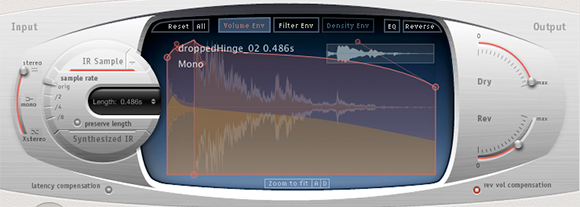Metallic Convolution
Posted: July 17th, 2015 | Author: Nathan | Filed under: music, sound design
Sure, it’s fun to use long, non-reverb sounds as impulse responses…but what about short, percussive ones?
Convolution reverbs have been a staple of audio post-production for a good while, but like most tools of any type, I prefer to force tools into unintentional uses.
While I am absolutely not the first person to use something other than an actual spatial, reverb-oriented impulse response – bowed cymbals are amazing impulse responses, by the way – I hadn’t really looked into using very short, percussive impulse responses until recently. I mean, it’s usually short percussive sounds you’re processing through the convolution reverb. I found that it can add an overtone to a sound that can be pretty unique. Try it sometime!
(Coincidentally, today Diego Stocco’s is promoting his excellent Rhythmic Convolutions, a whole collection of impulse responses meant for just these creative purposes. Go check it out!)
Today’s sample is in three parts. First, a very bland percussion track. Then, the sound of a rusty hinge dropped from about one foot onto a rubber mat, recorded with my trusty Sony PCM-D50 field recorder. Then, the same percussion track through Logic Pro’s Space Designer (Altiverb or any other convolution reverb will do, of course) using the dropped hinge sound as an impulse response. It adds a sort of distorted gated reverb, adding some grit, clank, and muscle to an otherwise pretty weak sound.
[soundcloud url=”https://api.soundcloud.com/tracks/214427372″ params=”color=ff5500&auto_play=false&hide_related=false&show_comments=true&show_user=true&show_reposts=false” width=”100%” height=”166″ iframe=”true” /]
Tags: convolution, digital audio, reverb, software, sound design | No Comments »